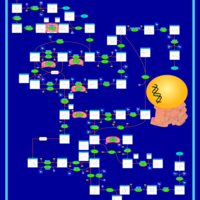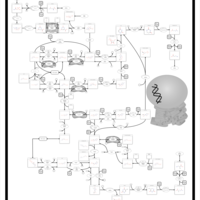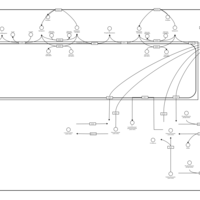| Pyrimidine metabolism |    |
| Starch and sucrose metabolism |    |
| Porphyrin Metabolism |    |
| Galactose Metabolism |    |
| Amino Sugar Metabolism |    |
| Starch and Sucrose Metabolism |    |
| Androgen and Estrogen Metabolism |    |
| Ibuprofen Action Pathway |    |
| Celecoxib Action Pathway |    |
| Beta Ureidopropionase Deficiency |    |
| Dihydropyrimidinase Deficiency |    |
| Galactosemia |    |
| MNGIE (Mitochondrial Neurogastrointestinal Encephalopathy) |    |
| Sialuria or French Type Sialuria |    |
| UMP Synthase Deficiency (Orotic Aciduria) |    |
| Salla Disease/Infantile Sialic Acid Storage Disease |    |
| Phenytoin (Antiarrhythmic) Action Pathway |    |
| Hereditary Coproporphyria (HCP) |    |
| Acute Intermittent Porphyria |    |
| Congenital Erythropoietic Porphyria (CEP) or Gunther Disease |    |
| Porphyria Variegata (PV) |    |
| Metachromatic Leukodystrophy (MLD) |    |
| Globoid Cell Leukodystrophy |    |
| Gaucher Disease |    |
| 17-Beta Hydroxysteroid Dehydrogenase III Deficiency |    |
| Tay-Sachs Disease |    |
| Codeine Action Pathway |    |
| Morphine Action Pathway |    |
| Nicotine Action Pathway |    |
| Irinotecan Action Pathway |    |
| Etoposide Action Pathway |    |
| Lactose Synthesis |    |
| Tamoxifen Action Pathway |    |
| Fabry disease |    |
| Krabbe disease |    |
| G(M2)-Gangliosidosis: Variant B, Tay-sachs disease |    |
| Glycogen synthetase deficiency |    |
| Glycogenosis, Type III. Cori disease, Debrancher glycogenosis |    |
| Glycogenosis, Type IV. Amylopectinosis, Anderson disease |    |
| Glycogenosis, Type VI. Hers disease |    |
| Mucopolysaccharidosis VI. Sly syndrome |    |
| Sucrase-isomaltase deficiency |    |
| Aromatase deficiency |    |
| Congenital disorder of glycosylation CDG-IId |    |
| GLUT-1 deficiency syndrome |    |
| Ibuprofen Metabolism Pathway |    |
| Irinotecan Metabolism Pathway |    |
| Etoposide Metabolism Pathway |    |
| Tamoxifen Metabolism Pathway |    |
| Codeine Metabolism Pathway |    |
| Morphine Metabolism Pathway |    |
| Nicotine Metabolism Pathway |    |
| Valproic Acid Metabolism Pathway |    |
| Tramadol Metabolism Pathway |    |
| Acetaminophen Metabolism Pathway |    |
| Nevirapine Metabolism Pathway |    |
| Celecoxib Metabolism Pathway |    |
| Sorafenib Metabolism Pathway |    |
| Lamivudine Metabolism Pathway |    |
| Artemether Metabolism Pathway |    |
| Mycophenolic Acid Metabolism Pathway |    |
| Androstenedione Metabolism |    |
| Estrone Metabolism |    |